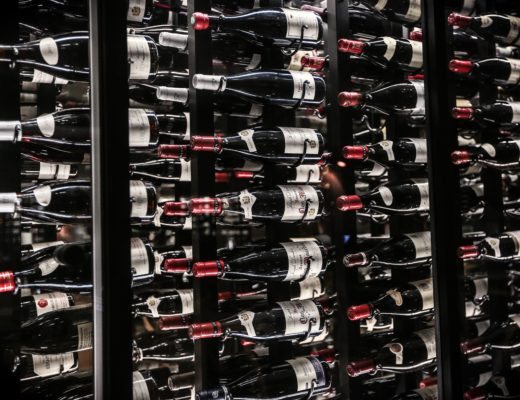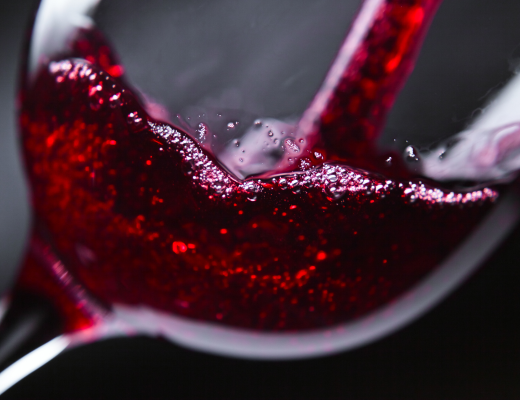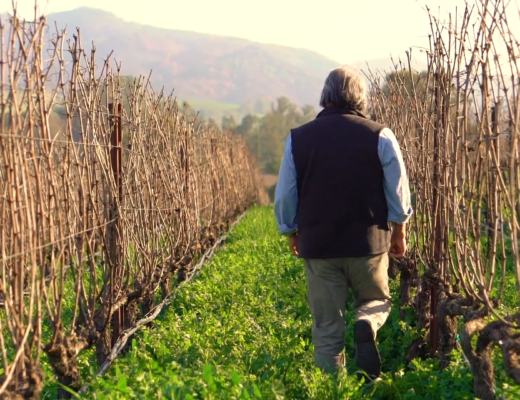In spring and summer, places like Napa Valley and Oregon’s Willamette Valley are thick with tourists. At harvest time in the fall, laden trucks ferry tons of grapes from vineyard to crush pad, while teams of pickers work through the night, lit by floodlights and fueled by bottomless urns of coffee.
But in winter, traffic’s light, the hotels are quiet, and as temperatures dip, the wine world seems to slow along with the fermentations. But while the only wine activity on the average wine lover’s radar is hunkering down indoors with a nice, rich red, winemakers and growers are blending, fermenting, and pruning all through the colder months.
“It looks quiet, but there’s quite a bit going on,” winemaker Russell Gladhart of Winter’s Hill in Oregon’s Dundee Hills told us. “When the wine is pressed and the barrels are filled, that’s the first finish line for us. The next step after that is malolactic fermentation.”
Malolactic fermentation is a process that follows fermentation, which gives wines a softer acid profile, a silkier texture, and buttery aromas. The name is a misnomer, because the process isn’t actually another fermentation but the conversion of malic acid (the tart acid found in a green apple) into softer lactic acid (as found in dairy products). Malolactic can be encouraged or inhibited by the winemaker but in many cases naturally occurs without any intervention. Virtually all red wines go through malo and many white wines do, especially those grown in cool climates which benefit from a creamier texture. In the northern Willamette Valley where Russell and his family work, it’s crucial that the grapes, which are naturally high in malic acid thanks to the cool weather, go through this process in the early winter.
“In a relatively cool climate, it’s really important to soften the wine,” he says of the process that every Winter’s Hill’s Pinots undergoes. Russell monitors malo both chemically, and in a much lower-tech fashion: “When you hold your ear up to the bung (the hole in the barrel), you can hear it crackling, like an open bottle of sparkling water.”
Once malolactic is complete, the barrels taste much closer to a finished wine, and they go for a long sleep in the cellar—Russell lets his Pinots rest in the same barrel until they are bottled. Then he and his team turn to bottling their rosé of Pinot Noir, their first release of the year. It comes out in March.
At Rudd Estate in Oakville, Napa Valley, the barrel room is busy in the winter as well. Since their Cabernet-based reds undergo a longer barrel regimen than Russell’s Pinots, the colder months have Assistant Winemaker Natalie Bath bouncing from vintage to vintage. On any given winter day, after monitoring fermentation and malo in the newest wines, she and her team might be working on one of the past two vintages.
First, they’ll turn to the reds from the previous (in this case, 2018) vintage. “Before harvest starts we have a core blend,” she told us, about the wines that have now been in barrel for about a year. “We’ll re-taste, depending on where we last left off.”
The wines that didn’t make the core blend the start are given another taste——maybe they were going through a “dumb” phase when the aromatics were closed off and the texture was tight, and maybe they’ve blossomed in the barrel. Natalie and the Rudd team evaluate all the wines with a fresh palate. “We don’t rule anything out.”
This year, winter winemaking at Rudd stretches all the way back to the 2017 vintage. They felt that Leslie’s Blend, a tiny production red named after founder Leslie Rudd, needed a little more time in barrel, so instead of bottling it two years after harvest, they gave it a few more months in wood. This winter they’ll bottle the special run of less than 400 cases, which will then go to their mailing list only.
Willamette, Napa, or anywhere else in the world—the winter is not just crucial in the cellar, but in the vineyard. “After harvest, we often give the vines a little irrigation, and let them go to sleep,” says Russell Gladhart, and in January they start pruning by hand. “It’s important to have the same people working in the vineyard year round, because they can see the effect of the pruning decisions,” then respond accordingly the following winter.
Pruning is cutting unwanted canes (mature shoots) from the vines in order to direct growth for the next harvest, and it has big consequences: Cut too much or too little, and the vine will grow too much, or become diluted by producing too many shoots. At Winter’s Hill, they want to keep parts of the vine that were well exposed to the sun, which means their buds will be more fruitful, with more flowers and more potential to grow grapes.
At Rudd, the vineyard team concentrates on infrastructure projects in November and December. While the cover crops—mostly legumes, and anything that’s going to produce nitrogen for the soil—germinate, the crew is repairing trellises and getting water lines into recently replanted portions of the vineyard. After two weeks off at the start of January, they start setting up the vines for the coming season: every Rudd vineyard worker is a graduate of the “pruning school” that Rudd manager administers for the workers.
Budbreak is the first sign of spring—to the untrained eye. Natalie says that “mentally, mid-March is when winter ends, as soon as soil temperatures start warming, and we’re waiting for budbreak to occur. Russell notices the swelling of the buds at Winter’s Hill in early March, and knows that budbreak is imminent.
When the weather starts to warm, those green buds start pushing through—and for the tourists trickling into wine country and passing in their cars, it’s a signal that a new season has begun. For those working in the cellars and the vineyard, on the other hand, the work never stopped.





